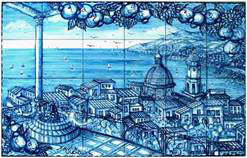Speaker
Anastasia S. Domazou
(Swiss Federal Institute of Technology Zurich (ETH Zürich))
Description
Proteins are important targets of partly reduced oxygen species (PROS) that are responsible for biological damage under oxidative stress. Protein oxidation results in the formation of amino acid radicals (AA•) randomly on the protein surface; in the presence of oxygen, further reaction may yield protein peroxyl radicals and protein hydroperoxides. All these species are likely to propagate damage. Urate, a low-molecular antioxidant, is able to repair tyrosine and tryptophan radicals in various proteins in vitro.1-2
We have studied the reaction of urate with the peroxyl radicals (AAOO•) of N-Ac-Gly-amide, N-Ac-Ala-amide and N-Ac-Pro-amide. All amino acid peroxyl radicals studied here were reduced by oxidizing urate to the urate radical. The reaction was followed in the range 320-400 nm, where urate radical has a strong absorption. Interestingly, the rate of urate radical formation is independent of the urate concentration with rate constants of ca. 103 s–1, which suggests initial formation of an adduct between AAOO• and urate that then further decays to form urate radicals.
It is to be stressed that reaction of AAOO• with urate gives rise to hydroperoxides (AAOOH) that are also reactive molecules. Our results suggest that urate could “repair” protein radicals (AA•) and prevent biological damage in vivo, given its high concentration in living organisms. For ascorbate, the principal endogenous antioxidant, we reported already rate constants for the repair of tyrosine and tryptophan radicals in various proteins in vitro3 and we recently measured rate constants close to 107 M–1 s–1 for its reaction with AAOO• (unpublished data). The urate radical produced upon repair of protein radicals is, in turn, reduced by ascorbate. The net result is loss of ascorbate with conservation of urate.
[1] B.M. Hoey and J. Butler Biochim. Biophys. Acta 1984, 791, 212-218.
[2] A.S. Domazou, H. Zhu, and W.H. Koppenol, Free Radic. Biol. Med. 2012, 52, 1929-1936.
[3] A.S. Domazou, W.H. Koppenol and J.M. Gebicki, Free Radic. Biol. Med. 2009, 46, 1049-1057.
Author
Anastasia S. Domazou
(Swiss Federal Institute of Technology Zurich (ETH Zürich))
Co-authors
Izoldi Kammenou
(Swiss Federal Institute of Technology Zurich (ETH Zürich))
Willem H. Koppenol
(Swiss Federal Institute of Technology Zurich (ETH Zürich))

